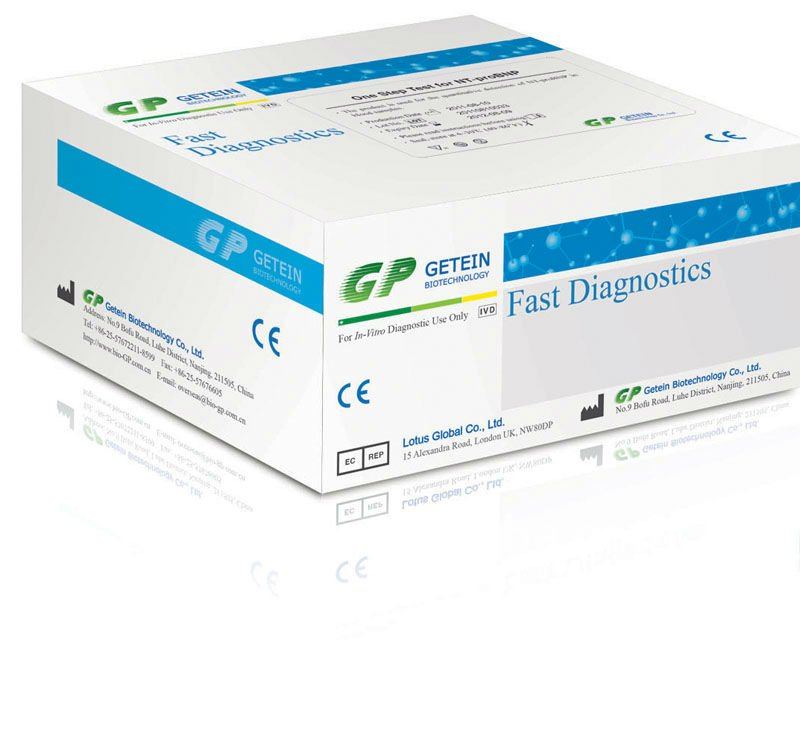one step tetst for NT-ProbNp - NT-ProbNp Specificaton & Trade Terms
| Model | NT-ProbNp |
|---|
| Place Of Origin | Nanjing,China |
|---|
| Price Term | EX-Work |
|---|
| Payment Term | T/T |
|---|
Intended Use:
One Step Test for NT-proBNP (Colloidal Gold) applies colloidal gold immunochromatography
to detect NT-proBNP in serum and plasma samples semi-quantitatively or quantitatively.
Principle of the Procedure:
One high specific and sensitive NT-proBNP monoclonal antibody and one NT-proBNP polyclonal
antibody are used for the test strips. The monoclonal antibody is biotinylated, gold-labelled and coated
on the polyester film, and the polyclonal antibody is fixed on the test lines. The antibodies on the test lines
form sandwich complexes with any NT-proBNP in the blood sample. The sample passes through the detection zone, in which the sandwich complexes gather along a line, appearing as a purplish
red streak (the test or signal line). Excess gold-labelled antibodies gather along the control line, signaling
visually that the test is valid. The intensity of the test line increases in proportion to the NT- proBNP concentration.
Test Procedure:
1. Restore the test card and the blood specimen to room temperature (20~25°C better.)
2. Open the pouch and label the strip with the patient specimen number.
3. Use the pipette to transfer blood from a sample collection tube.
4. Release the bulb slowly, dropping 3 to 4 drops (or 120 μl) of the sample.
5. Referring to the standard colorimetric card, get the semi-quantitative result by eye, or read the quantitative
result with the matching equipment. The result must be read within 10~30 mins.
Warnings and Precautions:
1. Use for in vitro diagnostics.
2. Use by healthcare professionals.
3. The best testing temperature is 15~30 °C, and the best humidity is 40~60%.
4. Do not use the strip beyond the expiration date printed on the outside of the box.
5. The strip must be used within 1 hour once its foil pouch has been opened.
6. The transfer pipette should be used for one specimen only. Discard it after used.
7. Patient specimens, used strip and transfer pipettes may be potentially infectious. Proper handling and
disposal.
methods should be established by the laboratory direction in accordance with local regulations.
8. Proper laboratory safety techniques should be followed at all times when working with potentially infectious
blood.
specimens.
